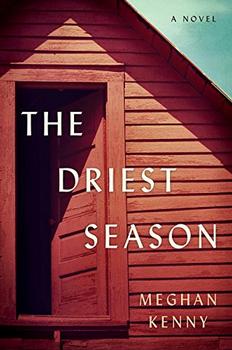Summary | Excerpt | Reviews | Beyond the Book | Read-Alikes | Genres & Themes | Author Bio

 Book Reviewed by:
Book Reviewed by:
Dean Muscat
Buy This Book
This article relates to The Driest Season
Much of The Driest Season revolves around the suicide of Mr. Jacobson and the effect it has on his youngest daughter—and main protagonist—Cielle. As Cielle tries to better understand the reasons why her father took his own life, she discovers that he was secretly seeking help for depression through a counselor, a fact he kept hidden even from his wife because "[h]e was embarrassed he couldn't help himself."
In the 1940s, counseling was only just gaining popularity among everyday Americans, and its benefits in helping all sorts of mental and emotional troubles were still a recent discovery. In fact, until the 1910s, counseling's primary focus was simply to offer guidance to students choosing careers and vocations. While this may seem an almost trivial start, the focus on matching jobs to individuals' personalities was actually quite revolutionary at a time when many were expected to either take up their father's profession or pursue careers deemed worthy by their parents.
Another major catalyst for popularizing counseling in America was the military during World War I. The focus of counseling in the military was initially an extension of its use among students. The military however used a number of psychological tests and counseling interviews to screen soldiers, to better determine whether potential recruits were mentally, as well as physically, fit for service. Counseling post-battle, to treat mental trauma and shock was not considered at the time and was a development that only really began to be seriously researched in 1952, with the introduction of the first Diagnostic and Statistical Manual of Mental Disorders (DSM-I), which attempted to diagnose patients who had symptoms from traumatic events including combat.
Outside of the military, the establishment of the first marriage and family counseling center in New York City in 1929 made the practice more readily available and accepted by civilians. This New York center was such a great success, that more centers were set up across America, all focusing on the specialty of treating marital and family problems. The popularity of these centers helped spread the importance of counseling outside of careers and military service, and introduced a domestic, everyday aspect to this psychological practice.
In the 1930s, the Great Depression influenced psychology practitioners to gear counseling strategies to help the vast number of men who were experiencing a sense of despondency due to unemployment. The Minnesota Employment Stabilization Research Institute was established at the University of Minnesota, which furthered what was being labelled "trait-factor" counseling, in order to assist workers who had lost their jobs. During the same decade, the U.S. government also introduced guidance and counseling positions in state departments of education throughout America.
By the 1940s and the beginning of World War II, the government needed counselors to help specialists in the military. Due to the huge numbers of men fighting abroad, women were able to apply to be military counselors for the first time and many of these female counselors continued to work once the war ended. Another important development for counseling in America happened through the G.I. Bill, signed into law by President Franklin D. Roosevelt in 1944. Among many things, the bill promised veterans "improved machinery for effective job counseling [...] for finding jobs for returning soldiers and sailors." (The Air Force was part of the Army until 1947 which is probably why the GI bill references only soldiers and sailors).
In four decades counseling had evolved from being a therapy practiced by a privileged few, to being a more commonplace career option and therapy available to Americans from all walks of life. The '50s saw counseling move away from its common remits of vocational guidance and continue to develop and cater for mental and emotional trouble of increasingly various types.
Filed under People, Eras & Events
![]() This article relates to The Driest Season.
It first ran in the March 7, 2018
issue of BookBrowse Recommends.
This article relates to The Driest Season.
It first ran in the March 7, 2018
issue of BookBrowse Recommends.





The Flower Sisters
by Michelle Collins Anderson
From the new Fannie Flagg of the Ozarks, a richly-woven story of family, forgiveness, and reinvention.

The House on Biscayne Bay
by Chanel Cleeton
As death stalks a gothic mansion in Miami, the lives of two women intertwine as the past and present collide.

The Funeral Cryer by Wenyan Lu
Debut novelist Wenyan Lu brings us this witty yet profound story about one woman's midlife reawakening in contemporary rural China.
Your guide toexceptional books
BookBrowse seeks out and recommends the best in contemporary fiction and nonfiction—books that not only engage and entertain but also deepen our understanding of ourselves and the world around us.